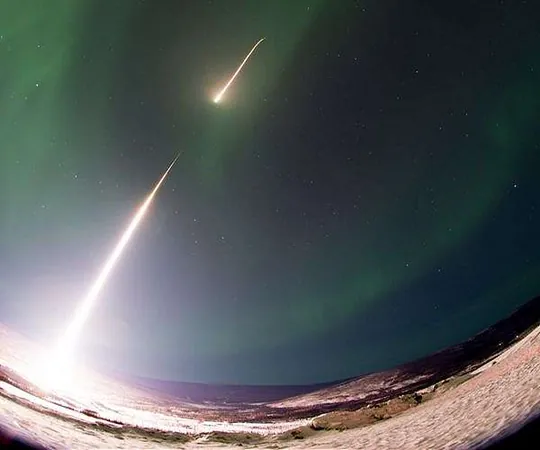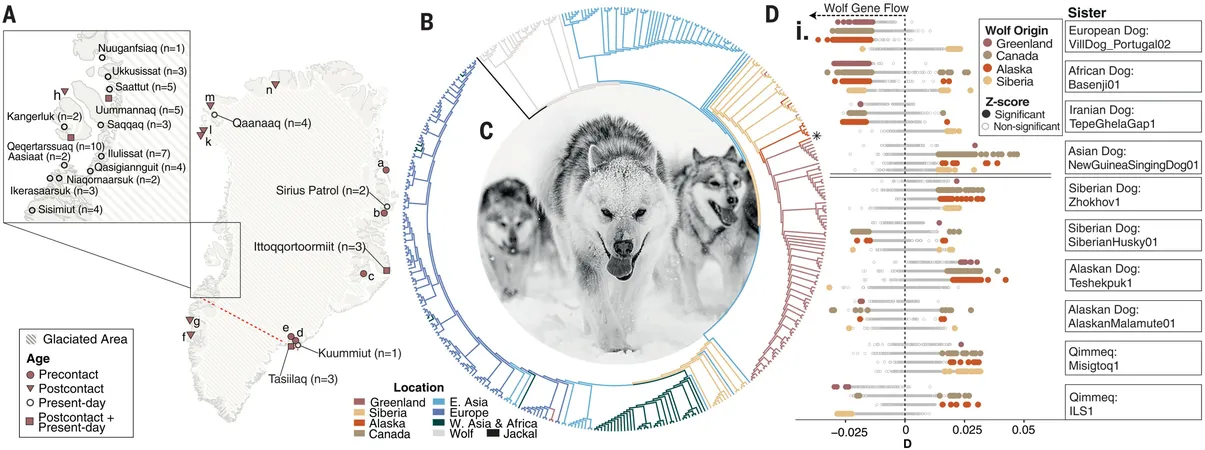
Prepare for an Electrifying 2025 Season: Three Rockets Set to Launch from Poker Flat!
2025-01-23
Author: Arjun
Exciting news has emerged from Fairbanks, Alaska, as three NASA sounding rockets are poised to take off from Poker Flat Research Range starting January 21 through February 5, 2025. These launches will kick off the 2025 research season, focusing on the awe-inspiring phenomena of auroras—specifically black, flickering, and fast-pulsating auroras.
Poker Flat, owned by the University of Alaska Fairbanks' Geophysical Institute and operated under NASA's Wallops Flight Facility, has a storied history. It has launched an impressive 350 major sounding rockets and approximately 1,800 meteorological rockets in its 55 years of operation, making it a premier site for atmospheric science research.
Diving into the Mysteries of the Aurora
One of the missions, dubbed the Black and Diffuse Aurora Science Surveyor, is spearheaded by Marilia Samara from NASA's Goddard Space Flight Center. Samara and her team aim to investigate the enigmatic black aurora, characterized by a notable reduction in auroral particle precipitation in certain areas. These dark patches appear against a backdrop of a fainter, more diffuse aurora and can seem to slice through it.
"Understanding the electron dynamics within these black aurora regions is crucial—specifically their numbers, energies, and movement directions," Samara explained. Black auroras, less visible to the naked eye, are most commonly seen by observers in regions with frequent auroral activity.
With prior experience launching rockets from Poker Flat, Samara has a deep connection to the area and has accumulated a wealth of knowledge from her previous studies on auroral electron precipitation.
Unraveling Flickering and Fast-Pulsating Auroras
Another mission, titled Ground Imaging to Rocket Investigation of Auroral Fast Features, will deploy two rockets focused on investigating rapid variations in auroral displays—flickering and fast-pulsating auroras. Robert Michell, a lead investigator on this mission, noted the key differences: "Flickering has regular periodicities, while fast-pulsating exhibits a more random modulation, resulting from different types of electromagnetic wave interactions."
This groundbreaking research will elucidate the wave-particle interactions that give rise to these stunning auroral phenomena, further advancing our understanding of space weather.
Michell, who also has significant experience at Poker Flat, began his journey in auroral studies through the CASCADES mission in 2005, which aimed to investigate plasma processes. His research history at Poker Flat emphasizes the importance of ground-based optical imaging and radar techniques, instrumental in complementing rocket data.
Collaborations and Future Launches
A variety of esteemed institutions contribute to these missions, including the Air Force Academy, University of California, Berkeley, and Dartmouth College. Within the University of Alaska Fairbanks, key personnel include professors Peter Delamere, Don Hampton, Hans Nielsen, and Paul Bernhardt.
Using two-stage Black Brant IX rockets, these missions are engineered to reach altitudes exceeding 200 miles, allowing for an unparalleled observation of auroras and the upper atmosphere. Furthermore, optical observations will be conducted from an observing site in Venetie, north of the Arctic Circle.
But the excitement doesn’t stop there! Stay tuned for a three-rocket launch planned for late March, led by UAF professor Mark Conde, which will delve into the dynamics of Earth's upper atmosphere during auroral substorms.
Join us as we prepare for a captivating launch season, showcasing the beauty and mystery of the auroras! For real-time updates and more thrilling revelations about the launches, keep an eye on the Poker Flat Launch Facebook page.




 Brasil (PT)
Brasil (PT)
 Canada (EN)
Canada (EN)
 Chile (ES)
Chile (ES)
 Česko (CS)
Česko (CS)
 대한민국 (KO)
대한민국 (KO)
 España (ES)
España (ES)
 France (FR)
France (FR)
 Hong Kong (EN)
Hong Kong (EN)
 Italia (IT)
Italia (IT)
 日本 (JA)
日本 (JA)
 Magyarország (HU)
Magyarország (HU)
 Norge (NO)
Norge (NO)
 Polska (PL)
Polska (PL)
 Schweiz (DE)
Schweiz (DE)
 Singapore (EN)
Singapore (EN)
 Sverige (SV)
Sverige (SV)
 Suomi (FI)
Suomi (FI)
 Türkiye (TR)
Türkiye (TR)
 الإمارات العربية المتحدة (AR)
الإمارات العربية المتحدة (AR)